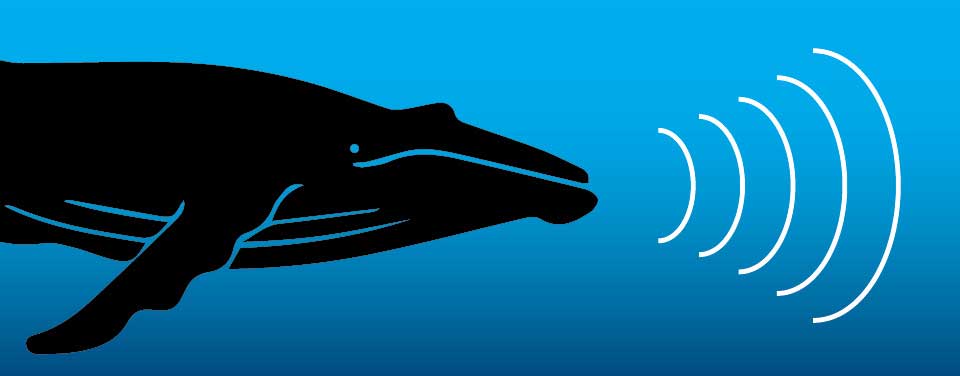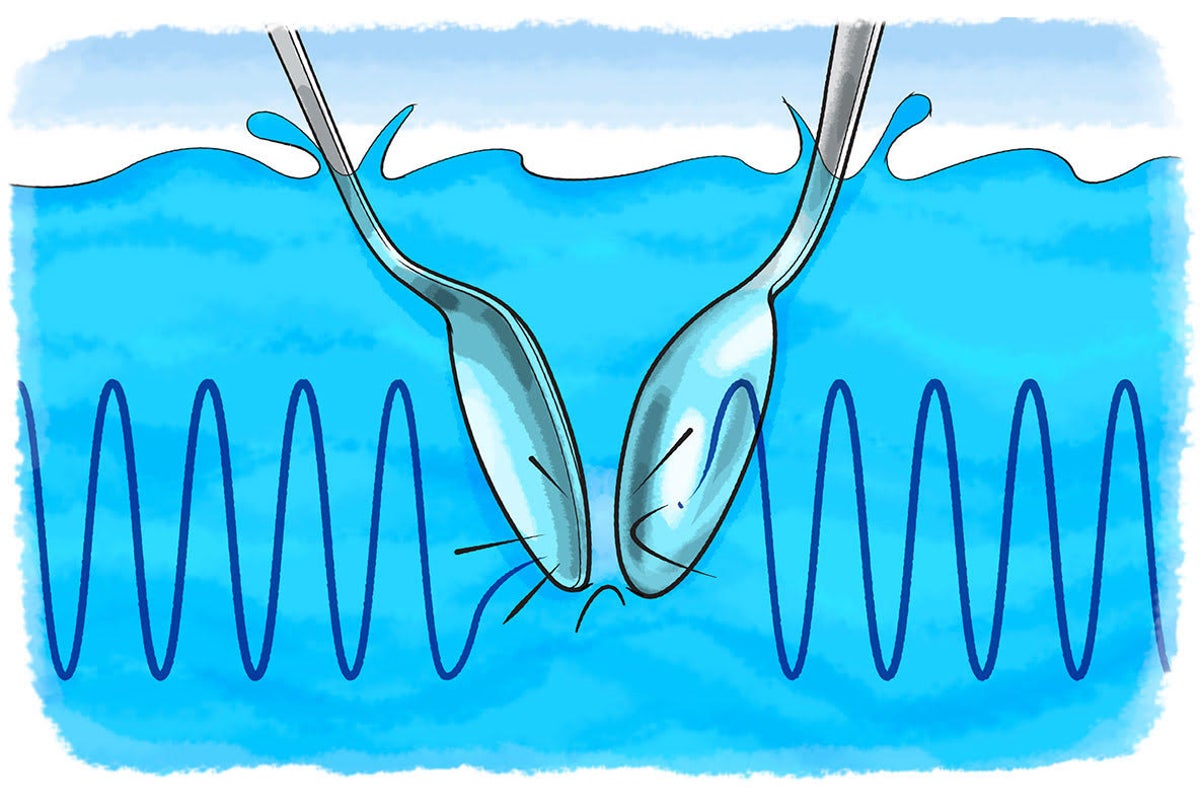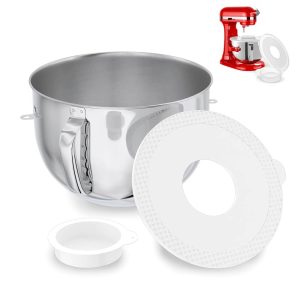Have you ever wondered how sound travels through water? It’s a fascinating subject that touches on science, nature, and even technology.
Imagine standing at the edge of a serene lake, tossing a pebble into the water. As the ripples expand, you might not see them, but sound waves are doing something similar. They spread, they move, and they communicate, even beneath the surface.
Sound traveling through water affects not just marine life but also human activities, from underwater communication to scientific exploration. This article will reveal the secrets of sound waves in water, how they differ from air, and why understanding this phenomenon is crucial for both nature and technology. Get ready to dive into the depths of acoustics and discover the incredible journey of sound beneath the waves.
Basics Of Sound Travel
Understanding how sound travels can be fascinating. Sound moves in waves. These waves carry energy through different environments. But how does this happen? Let’s explore the basics of sound travel and its properties.
Sound Waves And Their Properties
Sound waves are vibrations that move through the air. These vibrations create patterns. They are often invisible to the human eye. The waves have certain properties that define them. Frequency measures how fast the waves vibrate. Higher frequencies mean higher pitches. Amplitude measures the height of the wave. Bigger waves sound louder. These properties affect how we hear sound.
Mediums For Sound Transmission
Sound needs a medium to travel. It cannot move through empty space. The medium can be solid, liquid, or gas. Each medium affects sound differently. In air, sound travels at a moderate speed. In water, sound moves faster. This is due to water’s density. Solids, like metal, allow sound to travel fastest. The particles are tightly packed. This helps sound waves move quickly. Understanding these mediums helps us grasp sound travel better.

Credit: oceanservice.noaa.gov
Acoustics In Water
Sound travels differently in water compared to air. The behavior of sound in water is fascinating. It impacts marine life and human activities. Understanding these differences helps us in various fields. From ocean exploration to underwater communication, it’s important.
Water’s dense nature affects sound speed and direction. This makes studying acoustics in water crucial. Let’s explore how water influences sound.
Differences Between Air And Water
Sound moves through air and water in distinct ways. Air is less dense, allowing sound to travel faster. Water, being denser, changes sound’s path and speed. This affects how we hear underwater.
In water, sound waves move quicker and farther. This is due to water’s compact molecules. Thus, sound behavior changes significantly between these two mediums.
Speed Of Sound In Water
Sound travels faster in water than in air. On average, it moves at 1,500 meters per second. In air, sound moves at about 340 meters per second. Water’s density increases sound speed significantly.
Temperature, salinity, and pressure also impact sound speed. Warmer water speeds up sound travel. Higher salinity and pressure also boost speed. Understanding these factors aids in sound wave predictions.
Sound Propagation In Oceans
Sound travels in fascinating ways under the sea. Unlike on land, where air is the medium, water allows sound waves to move faster and over greater distances. This unique behavior of sound in oceans has intrigued scientists and oceanographers for decades.
Factors Affecting Sound Travel
Various elements can impact how sound moves through ocean waters. One key factor is water depth. Sound tends to travel differently in shallow waters compared to deeper regions. In shallow areas, sound waves may reflect off the ocean floor, altering their path.
Another critical factor is the presence of obstacles like underwater mountains or reefs. These can cause sound waves to scatter, making it harder for them to travel in a straight line. It’s fascinating to think about how a simple reef could change the way sound travels!
Role Of Temperature And Salinity
Temperature plays a significant role in sound propagation. Warmer water speeds up sound waves, while cooler water slows them down. This is why sound might travel differently in tropical waters compared to polar regions.
Salinity, or the salt content in water, also affects sound travel. Higher salinity increases water density, enabling sound to move faster. Imagine the soundscape of the ocean changing simply because of salt levels. Next time you’re near the sea, consider how temperature and salinity are quietly at work.
Have you ever wondered how whales communicate across vast distances? Their ability to send sound signals through different ocean layers is a testament to the complex interplay of these factors.
Next time you listen to the ocean, remember that there’s a whole world of sound traveling beneath the waves, influenced by factors you might not see but can now appreciate.
Marine Life And Sound
Sound travels faster in water than in air due to water’s density. Marine animals rely on this for communication and navigation. Whales and dolphins, for example, use sound to locate food and interact with each other.
Marine life relies heavily on sound to navigate their vast underwater world. Sound travels faster and further in water than in air, making it an essential tool for communication among marine animals. But the ocean is not just a serene space filled with nature’s symphony; human activities are adding disruptive notes to this delicate balance.Communication Among Marine Animals
Many marine animals use sound to communicate, mate, and hunt. Whales, for example, are known for their complex songs that can travel hundreds of miles underwater. Dolphins use echolocation, sending out clicks that bounce off objects to help them locate prey. Can you imagine navigating a world where visibility is limited, and sound is your primary guide? Fish and marine mammals have adapted to this environment over millions of years. They depend on the clarity of sound to maintain social bonds and ensure their survival.Impact Of Human Activities
Human activities are introducing noise pollution into the marine environment. Ships, oil exploration, and underwater construction create sounds that can interfere with marine life communication. This noise can disorient animals, making it difficult for them to find food or mates. Have you ever tried talking to a friend in a noisy room? That’s what marine animals experience daily due to increasing ocean noise. It’s a growing concern as it can lead to stress and behavioral changes in wildlife. By understanding the importance of sound in marine life, you can appreciate why reducing noise pollution is crucial. Simple actions like supporting quieter ship technologies can make a significant difference. You have the power to help protect these underwater soundscapes. What steps will you take to reduce your impact on ocean noise?Technological Applications
Sound travels through water in fascinating ways. This ability has led to important technological applications. These applications play a vital role in various fields, from navigation to communication. Understanding how sound moves underwater can help us explore and utilize these technologies effectively.
Sonar And Its Uses
Sonar stands for Sound Navigation and Ranging. It uses sound waves to detect objects underwater. Ships and submarines rely on sonar to map the ocean floor. It helps locate shipwrecks and underwater hazards. Sonar also aids in studying marine life and tracking fish populations. This technology is crucial for safe navigation in the ocean.
Underwater Communication Systems
Underwater communication systems use sound waves for data transmission. These systems are essential for divers and submarines. They send signals through water to communicate over long distances. Research teams use them for scientific data collection. These systems ensure reliable communication where radio waves cannot reach. They provide a lifeline in deep-sea exploration.

Credit: www.scientificamerican.com
Challenges And Limitations
Sound travels through water, but it faces challenges and limitations. These factors affect how sound moves and how far it travels. Understanding these challenges helps in fields like marine research and underwater communication.
Attenuation And Absorption
Sound waves lose strength as they move through water. This is called attenuation. Water absorbs some of the sound energy. This reduces the sound’s intensity. As sound travels further, it becomes weaker. Different frequencies attenuate at different rates. High frequencies lose strength faster than low frequencies. This affects the clarity and distance sound can travel underwater.
Environmental Concerns
Environmental factors also impact sound travel in water. Water temperature affects sound speed. Colder water slows down sound waves. Salinity, or salt content, also plays a role. Higher salinity increases sound speed. Water currents and layers can bend sound waves. This bending can change the sound’s path. Noise pollution from ships and machines creates interference. These sounds can drown out important signals. Understanding these environmental factors is crucial for effective underwater communication.

Credit: www.youtube.com
Frequently Asked Questions
How Does Sound Travel Through Water?
Sound travels through water by creating waves. These waves are compression and rarefaction of water molecules. Water is denser than air, allowing sound to travel faster and farther. The speed of sound in water is about 1,484 meters per second, compared to 343 meters per second in air.
Can Humans Hear Underwater Sounds?
Yes, humans can hear underwater sounds but with reduced clarity. Water transmits sound efficiently, yet distorts it due to density. Underwater, sounds appear louder and travel farther. However, directionality is often lost, making pinpointing the sound source challenging for humans.
Why Does Sound Move Faster In Water?
Sound moves faster in water because it is denser than air. The molecules in water are closely packed, aiding quick transmission. This density facilitates faster propagation of sound waves. Therefore, sound travels approximately four times faster in water than in air.
What Affects Sound Speed In Water?
Several factors affect sound speed in water, including temperature, salinity, and pressure. Higher temperatures increase sound speed. Increased salinity also enhances sound transmission. Additionally, higher pressure, found in deeper water, can boost sound speed. These factors together influence how sound travels underwater.
Conclusion
Sound travels effectively through water. It moves faster than in air. This fact is crucial for marine life communication. Dolphins and whales rely on it. Submarines also use sound waves for navigation. Understanding sound’s journey through water helps us. It aids in exploring the ocean’s depths.
It also assists in protecting marine ecosystems. The ocean remains a mysterious place. Sound gives us a glimpse into its secrets. Always remember, water plays a vital role in sound travel. Keep learning and stay curious about the world beneath the waves.



